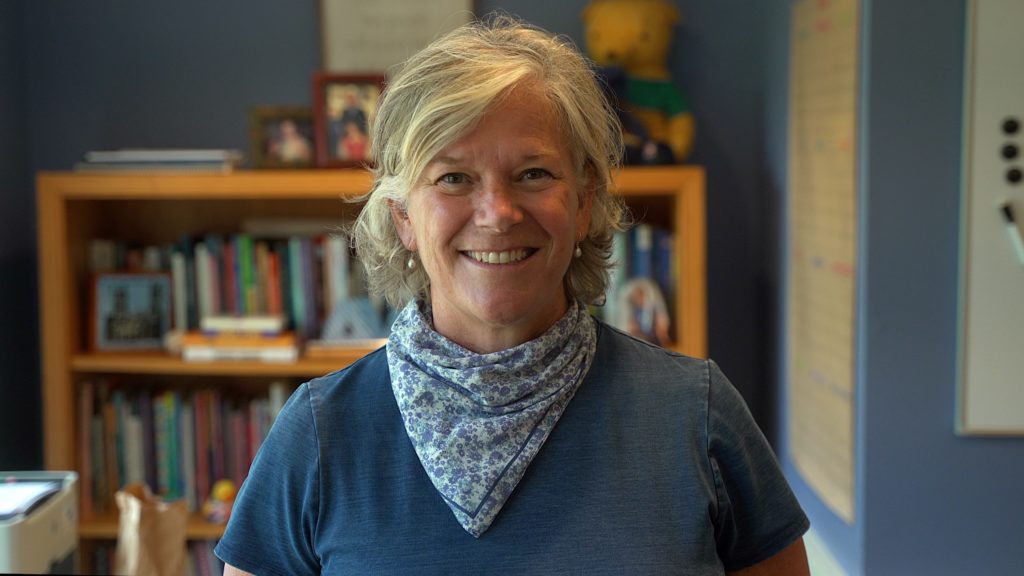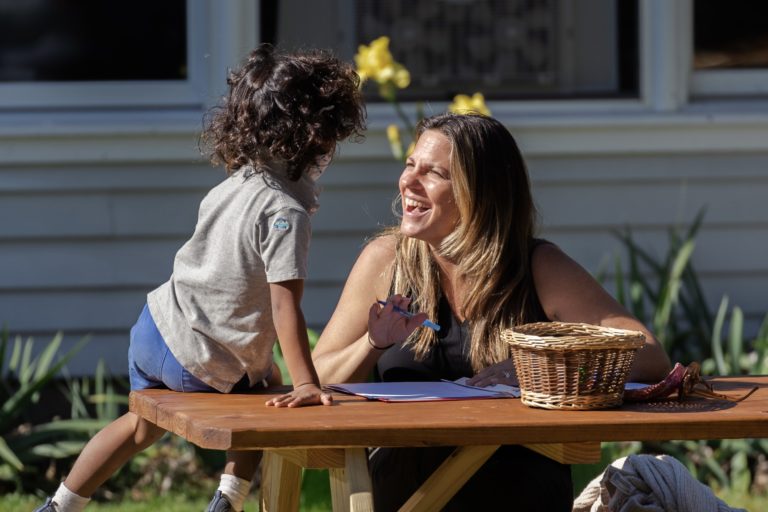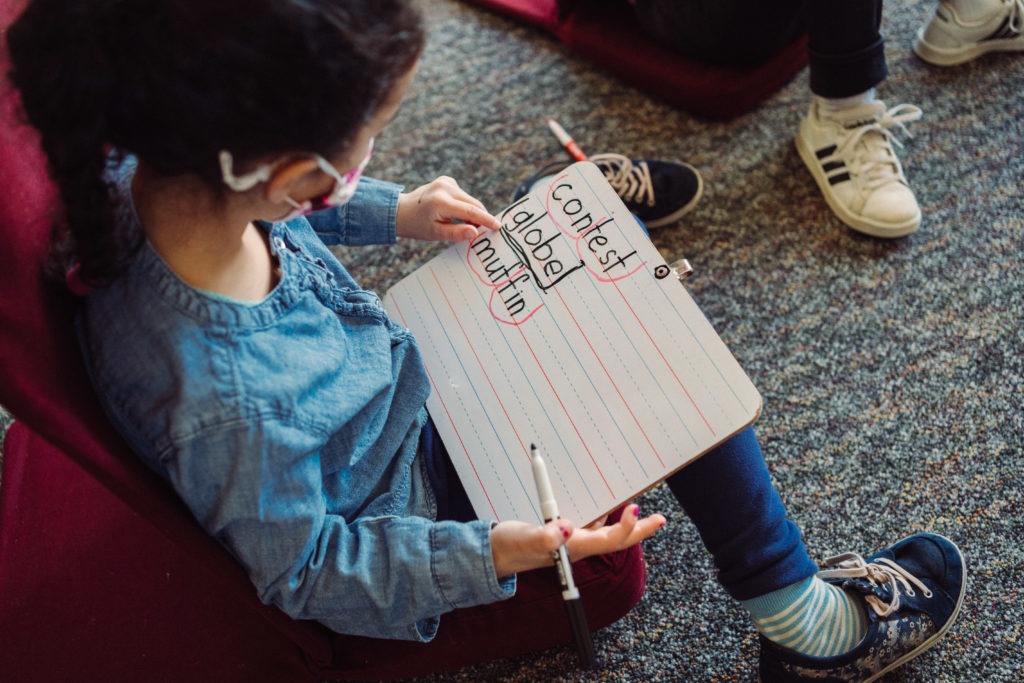Building Relationships: Learning at the Lower School

Posted on March 28, 2022 by Indian Mountain School

“Yippeeeee!” The gleeful cheers have an intensity that can only come from young children. In this case, it’s a group of first graders in science class, thrilled that their classmate successfully launched a balloon rocket across the room. That joy is at the core of learning at the IMS Lower School.
Sitting in the same classroom later that day, Amy Vorenberg, Head of the Lower School, sums it up: “What are we about? We’re about building relationships. Relationships that connect students with their peers, with their teachers, with the campus, and with the community. For teachers, those relationships are also built between the classrooms and subjects we teach, in order to support, challenge and inspire our students in an integrated and foundational way from Pre-Kindergarten on up through fourth grade.”

“Everything we teach is interrelated.”
Amy Vorenberg, Head of Lower School
Amy Vorenberg came to the IMS Lower Campus in 2020, at the height of the pandemic when connections were challenged by masks, being six feet apart, and countless zoom meetings. But the opposite happened within the school’s curriculum. “For example,” Ms. Vorenberg says, “the things we work on in science are a blend of language arts and literacy skills, math skills, observational skills, artistic skills. We have stopped seeing our offerings as disconnected subjects and, instead, we understand that everything we teach is interrelated.”
One building block that connects every classroom is the literacy curriculum. In 2021, the school implemented a program that is rooted in a workshop model, along with a system of reading progression that allows students to build skills at their level. The goal is to empower the students to see themselves as literacy learners, and by building skills at their level, children feel buoyed and they improve. As Ms. Vorenberg says, “to see the enthusiasm, pride and joy of learning is truly magical.”
An added resource in the literacy program is a partnership with the Ascend Teachers, who work with students with diagnosed language learning differences, to create a uniform set of materials for teaching key words and sounds. “The result,” Ms. Vorenberg says, “is that we are all literacy teachers at IMS – the music instructor teaching lyrics, the science teacher working with science journaling, the math teacher using word problems — and we can really lean into that work with the benefit of having similar resources in every classroom.”
The same philosophy supports the math program on the Lower Campus. We know that math isn’t just about computation; it is about patterns, spatial reasoning, logic, puzzle-solving, quantities and relationships. Children who are used to memorizing formulas often give up on math when those formulas get more complicated. To help nurture mathematical curiosity and mathematical literacy, Lower Campus students are being taught foundational skills of being mathematical thinkers, including numeracy and subitizing — understanding the why, not just knowing the how.


Teaching for relevance and purpose is a priority at IMS and for our youngest students it’s a journey that begins on the Lower Campus. “When you have an integrated curriculum,” Ms. Vorenberg explains, “you’re connecting the dots between literacy and math and art and science and social studies and in turn, the real world. You’re empowering children to see those relationships and make meaning out of them.” She adds, “The result is thrilling! Seeing that energy of being a learner, seeing the light bulbs go off when the connections are made. That’s what I love.”
This website uses cookies so that we can provide you with the best user experience possible. Cookie information is stored in your browser and performs functions such as recognising you when you return to our website and helping our team to understand which sections of the website you find most interesting and useful.
Read our full privacy policy for more information.
Strictly Necessary Cookie should be enabled at all times so that we can save your preferences for cookie settings.
If you disable this cookie, we will not be able to save your preferences. This means that every time you visit this website you will need to enable or disable cookies again.
This website uses Google Analytics to collect anonymous information such as the number of visitors to the site, and the most popular pages.
Keeping this cookie enabled helps us to improve our website.
Please enable Strictly Necessary Cookies first so that we can save your preferences!